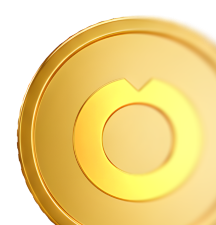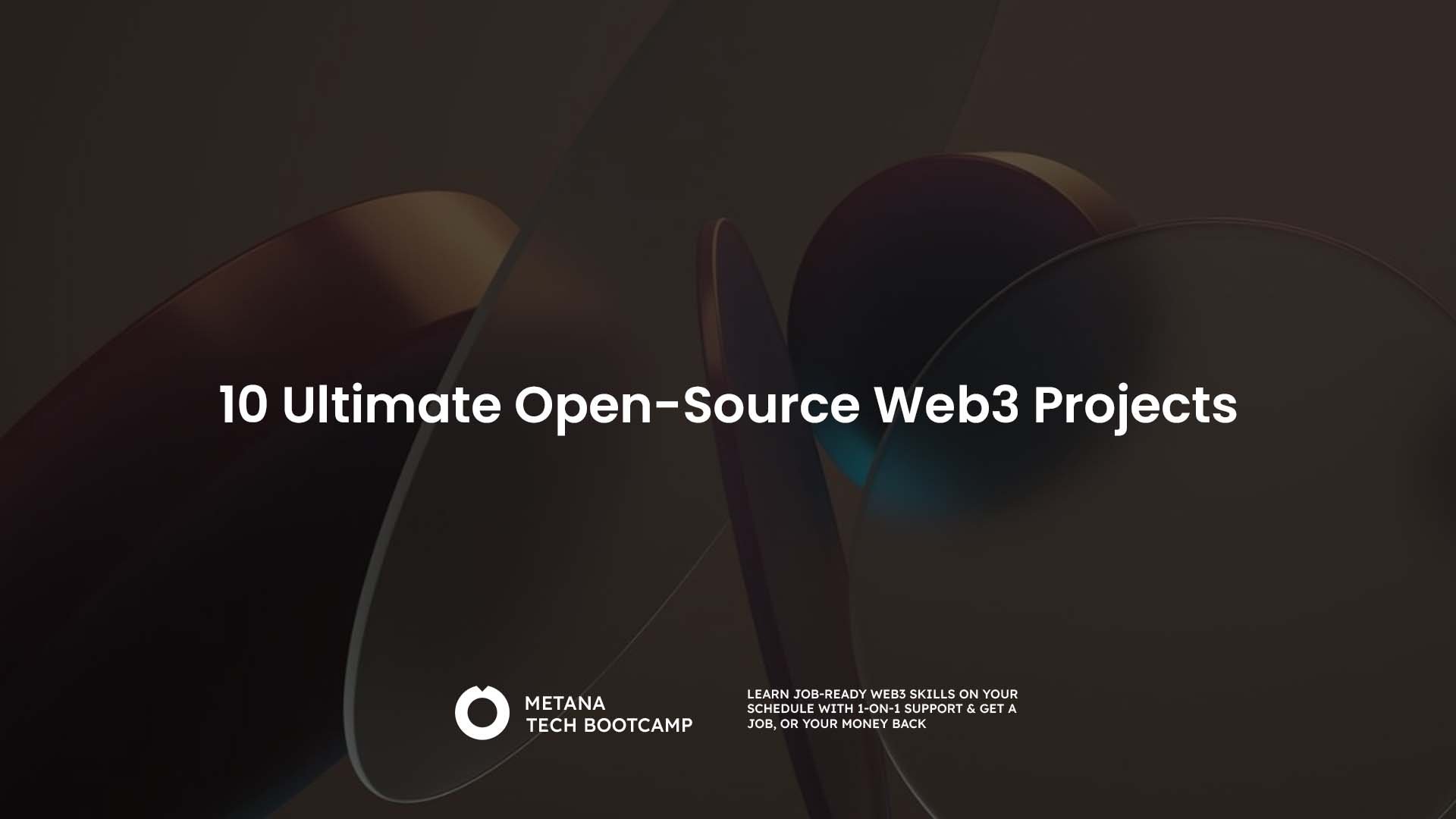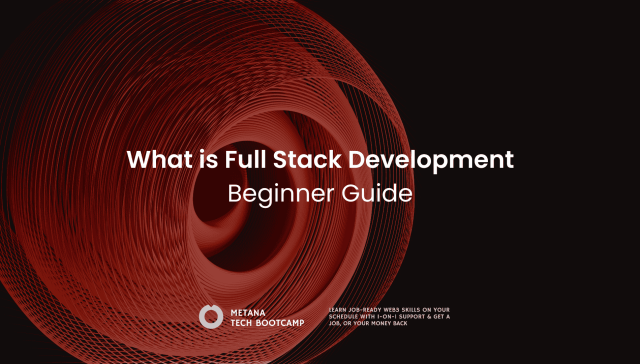TL;DR
Web3 is revolutionizing the internet by enabling decentralized, peer-to-peer interactions without intermediaries, powered by blockchain and cryptography. Open-source projects are at the heart of this movement, promoting transparency, collaboration, and innovation.
Key Web3 Open-Source Projects
- Core Infrastructure: Ethereum (smart contracts), IPFS (decentralized storage), Arweave (permanent storage).
- DeFi: Uniswap (AMM for token trading), Compound & Aave (decentralized lending/borrowing).
- NFTs: OpenSea & Rarible (NFT marketplaces fostering creator-driven economies).
- Social & Identity: Farcaster & Lens Protocol (decentralized social media platforms).
Impact of Open-Source Web3
- Empowers Users: Open code ensures transparency and eliminates centralized control.
- Fosters Rapid Innovation: Community contributions lead to continuous improvements.
- Ensures Data Ownership: Users control their data and digital identity.
Over 18,000 monthly active developers are contributing to open-source Web3 projects, and more than 5,000 are involved in Ethereum-specific initiatives currently.
Web3 and Open-Source: Perfect Together
Web3 and open-source go hand in hand. Open-source projects show what Web3 is all about. They’re all about sharing, being open, and letting everyone take part. Both beliefs create a place where anyone can help, see, or change a project’s code. This helps spark new ideas and improvements.
Prominent Web3 Open-Source Projects
Here are some of the most popular open-source Web3 projects:
Core Infrastructure
1. Ethereum:
Known as a platform for smart contracts, Ethereum is significantly more than that due to its open-source nature. Tools like Truffle and Hardhat, born out of Ethereum’s vibrant open-source community, greatly simplify the process of building decentralized applications (dApps). Ethereum’s community is continually making improvements, like The Merge, strengthening its role as a foundation of Web3.
2. IPFS:
The InterPlanetary File System (IPFS) is a ground-breaking file system that goes far beyond just storing data. It enables the distribution of content in a way that resists censorship, powers decentralized apps like Lens Protocol, and preserves important information for future generations. These capabilities make IPFS a key pillar of Web3’s resilience and accessibility.
3. Arweave:
Arweave is not just a permanent storage solution for digital art NFTs. It enables the permanent storage of things like academic research, historical archives, and legal documents on a decentralized ledger. This data is accessible to everyone and protected from manipulation, showcasing the immense power that Arweave’s open-source nature unleashes.
Decentralized Finance (DeFi)
4. Uniswap:
Uniswap’s automated market maker (AMM) model democratizes token trading by eliminating the need for centralized exchanges and letting users directly control their assets. Uniswap’s open-source code has inspired numerous forks and variations, nourishing a vibrant DeFi landscape driven by innovation and community contributions.
5. Compound:
Compound, an open-source lending protocol, is more than just a tool for earning interest. It’s about reimagining financial services in a way that is both accessible and transparent. With Compound, anyone can become a lender or borrow, and because the code is open-source, the community can make improvements as user needs evolve.
6. Aave:
Aave is more than a lending protocol offering flexible loan options. Its open-source nature enables developers to build custom DeFi applications atop its protocol, promoting a diverse selection of lending and borrowing experiences and highlighting the power of open-source collaboration in DeFi.
Non-Fungible Tokens (NFTs)
7. OpenSea:
OpenSea is more than just a platform for trading digital art. It’s a community hub where creators and collectors connect, ideas come to life, and the boundaries of art and ownership are constantly being redefined. OpenSea’s open API allows developers to create innovative NFT experiences, expanding the possibilities of this transformative technology.
8. Rarible:
Rarible goes beyond offering multi-chain support and fractional ownership. It’s open-source nature fosters a truly community-owned platform. Its governance token empowers users to influence the platform’s direction, ensuring it remains responsive to the needs of creators and collectors.
Social Media and Identity
9. Farcaster:
Farcaster is an open-source social network that gives users control over their data and content. Its pods, built on IPFS, ensure data resilience and resistance to censorship. This paves the way for a more user-centric and independent social media landscape.
10. Lens Protocol:
Lens Protocol is more than just a platform for building decentralized social media applications. It enables developers to create unique experiences that prioritize user control and community governance. This open-source protocol encourages a diverse ecosystem of social apps, demonstrating that Web3 is not a monolithic platform, but a tapestry of innovative experiences.
How Open-Source Web3 Projects Change Things
Open-source Web3 projects are like super-powered Legos for the internet. They’re transparent, accessible, and constantly evolving, changing things in exciting ways:
- More power to the people: Open code lets anyone build and improve, democratizing innovation. No gatekeepers, just a global community shaping the future.
- Faster, better, stronger: Open projects adapt quickly, constantly learning and improving. Say goodbye to slow, clunky tech.
- Your data, your rules: You control your data and participate in the digital economy, not just consume it. Open Web3 empowers you.
Challenges and Opportunities in Open-Source Web3 Projects
| Challenges | Opportunities |
|---|---|
| Sustainability | Innovation |
| Attracting and retaining talent without traditional revenue models can be difficult. | Open-source fosters rapid experimentation and collaboration, leading to groundbreaking advancements. |
| Security | Transparency |
| Open code exposes vulnerabilities, requiring constant vigilance and community collaboration. | Openness builds trust and allows users to scrutinize code, ensuring fairer and more equitable systems. |
| Scalability | Community ownership |
| Handling the growing complexity of Web3 projects can be a technical hurdle. | Users can actively participate in shaping the direction of projects, leading to a stronger sense of belonging and investment. |
| Governance | Resilience |
| Finding the right balance between community participation and efficient decision-making can be tricky. | Decentralized networks are resistant to censorship and manipulation, creating a more robust and inclusive digital environment. |
| User adoption | Global reach |
| Navigating the steep learning curve of Web3 technology can be a barrier to entry. | Open-source transcends borders, allowing anyone with an internet connection to contribute and benefit from Web3. |
Final Thoughts
Open-source Web3 isn’t just about cod. It’s a movement for a freer, fairer internet. By building in the open, we create systems that are decentralized, transparent, and community-owned.
Yes, there are challenges—scaling, security, attracting contributors. At the same time these are also opportunities for innovation and collaboration.
In 2025, the momentum is real. Developers, designers, and communities around the world are shaping a better digital future together!
One line of code at a time. One step closer to the future.
FAQ
What is Web3, and how does it relate to open source?
- Web3 refers to the third generation of the internet, which emphasizes decentralization and utilizes blockchain technology. Open-source projects in the Web3 space are typically built with transparent, collaborative code that anyone can inspect, modify, and enhance.
Why are open-source projects important for the development of Web3?
- Open-source projects are crucial for Web3 development because they foster innovation through community collaboration, maintain transparency that builds trust, and ensure that the control of the network remains with the users rather than centralized entities.
How do I contribute to an open-source Web3 project?
- You can contribute by engaging with the project’s community on platforms like GitHub, participating in discussions, reporting issues, contributing code, writing documentation, and helping with community outreach or education.
Can I make money by participating in open-source Web3 projects?
- Yes, many open-source Web3 projects have mechanisms to reward contributors, such as bounties for specific tasks, grant programs for larger initiatives, or even direct payment in cryptocurrency for ongoing contributions.
What are some examples of popular open-source Web3 projects?
- Examples include Ethereum, Bitcoin, Polkadot, IPFS, Filecoin, Chainlink, and many decentralized finance (DeFi) and non-fungible token (NFT) platforms.
How does blockchain technology ensure the security of Web3 applications?
- Blockchain’s distributed nature means that data is stored across a network of computers, making it difficult to alter. Combined with cryptographic techniques, this ensures a high level of security for transactions and data on Web3 applications.
Are there any environmental concerns associated with Web3 technologies?
- Yes, some blockchain networks, especially those using Proof-of-Work (PoW) consensus mechanisms, are energy-intensive. However, there is a growing shift towards more energy-efficient consensus mechanisms like Proof-of-Stake (PoS).
What is the role of cryptocurrencies in Web3?
- Cryptocurrencies serve as the medium of exchange within Web3 ecosystems, providing a way to transfer value, incentivize behavior, and facilitate governance within decentralized networks.
How can I ensure my privacy when using Web3 applications?
- To protect your privacy, use a pseudonymous wallet address, be mindful of the on-chain data you share, and consider privacy-focused tools or networks that offer additional layers of anonymity.
What are DAOs, and how do they fit into the Web3 narrative?
- DAOs, or Decentralized Autonomous Organizations, are organizational structures governed by smart contracts and community consensus rather than a central authority. They exemplify the Web3 ethos of decentralization and collective decision-making.








